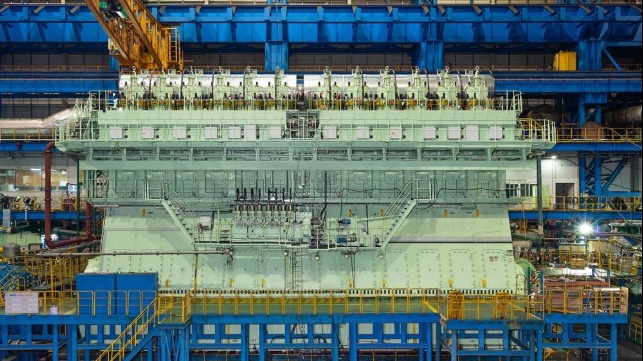WinGD Expects Methanol and Ammonia-Fueled Engines By 2024 and 2025

Swiss engine designer WinGD (Winterthur Gas & Diesel) has become the latest major engine manufacturer to provide its timeframe for the expected introduction of methanol and ammonia engines. The company reports that it is making strong progress, projecting that methanol-fueled engines will be available by 2024 and ammonia will follow a year later in 2025.
“Our commitment to deliver engine technologies to enable the use of clean fuels by 2025 means that ship owners and operators can already invest in ships that are ready to use ammonia and methanol today,” said Dominik Schneiter, Vice President Research & Development, WinGD, addressing one of the key concerns during the beginning of this transition phase. “The ability to use zero-carbon or carbon-neutral fuels such as ammonia and methanol in both of its core engine types will give ship operators unprecedented flexibility in how they reduce emissions.”
The efforts with the new alternative fuels are part of an ongoing program to build a migration path for ships and provide an element to future-proof current new ship orders. WinGD highlights that its X and X-DF engine series are already compatible with low-carbon fuels, primarily liquid biofuel or biogas, which can provide significant reductions in greenhouse gas emissions.
They cited as an example, the tanker operator Terntank which has bunkered and operated its X-DF engines on liquefied biogas starting in 2018. Other options currently available include hybridization to optimize current operations in line with the IMO’s incoming Carbon Intensity Index (CII) and Energy Efficient Design Index for Existing Ships (EEXI).
According to the company, the full, long-term use of carbon-neutral or zero-carbon fuels is the next step on this pathway.
“By 2030, many of the ships that will be sailing in 2050 – the date of IMO’s greenhouse gas emission reduction target - will already have been ordered,” said Volkmar Galke, Director of Global Sales, WinGD “Our clean fuel engine technologies will be available well before then and will be based largely on our current technologies, allowing us to support ship owners and operators in their decarbonization choices whenever they make them.”
The Swiss company’s timeline is similar to that of other major engine manufacturers that are also pushing hard to develop the systems required to support the energy transition. Wartsila reported in July 2021 that it can currently operate engines on natural gas, biogas, synthetic methane, or hydrogen blends of up to 25 percent hydrogen, and in trials has one engine operating on a mix of up to 70 percent ammonia. They also anticipate having an engine concept with pure ammonia fuel in 2023 and an engine and plant concept for pure hydrogen operation for the energy market by 2025.
